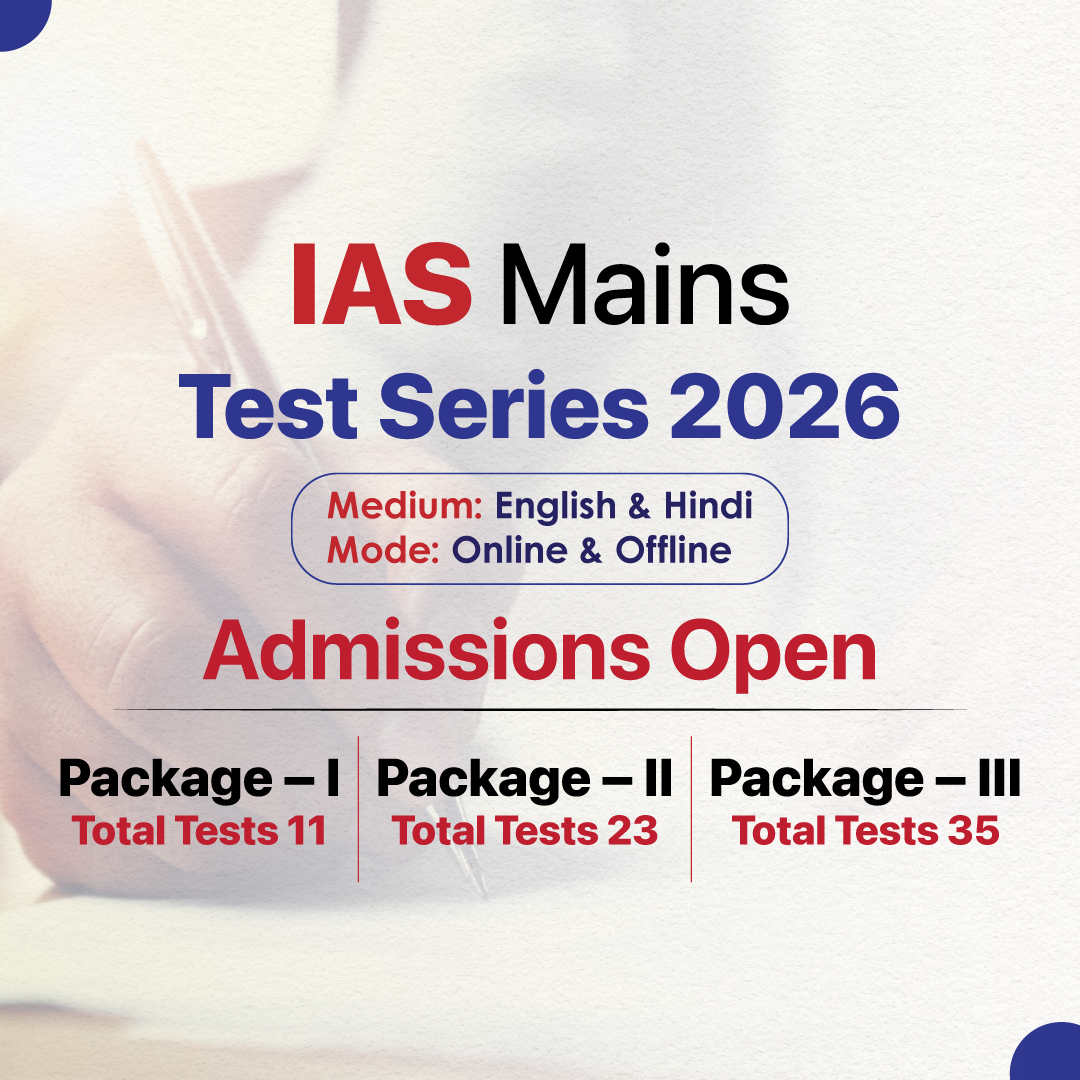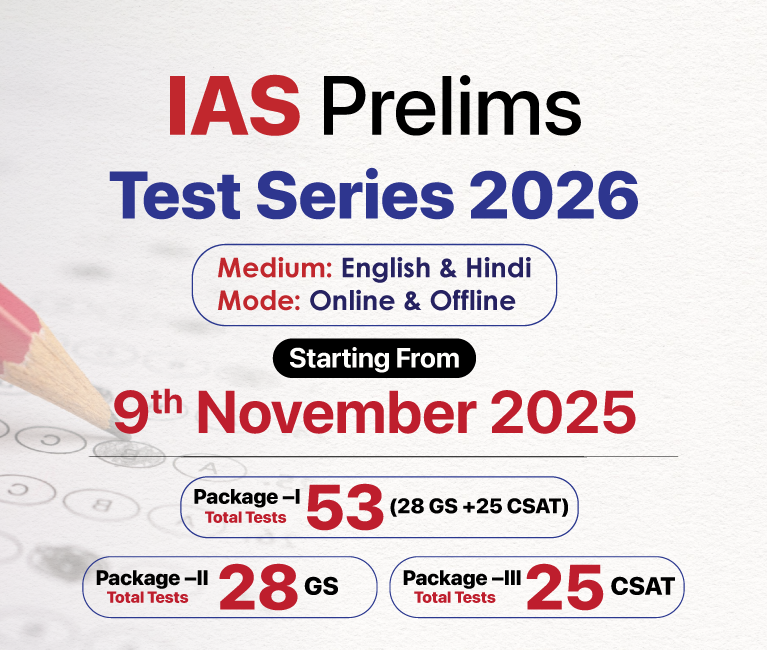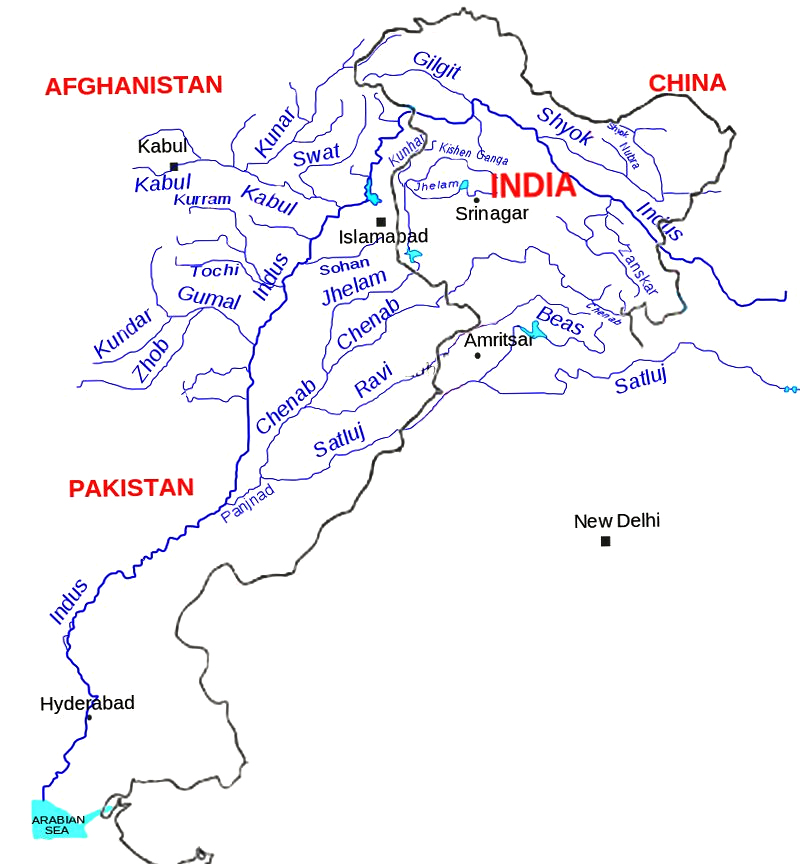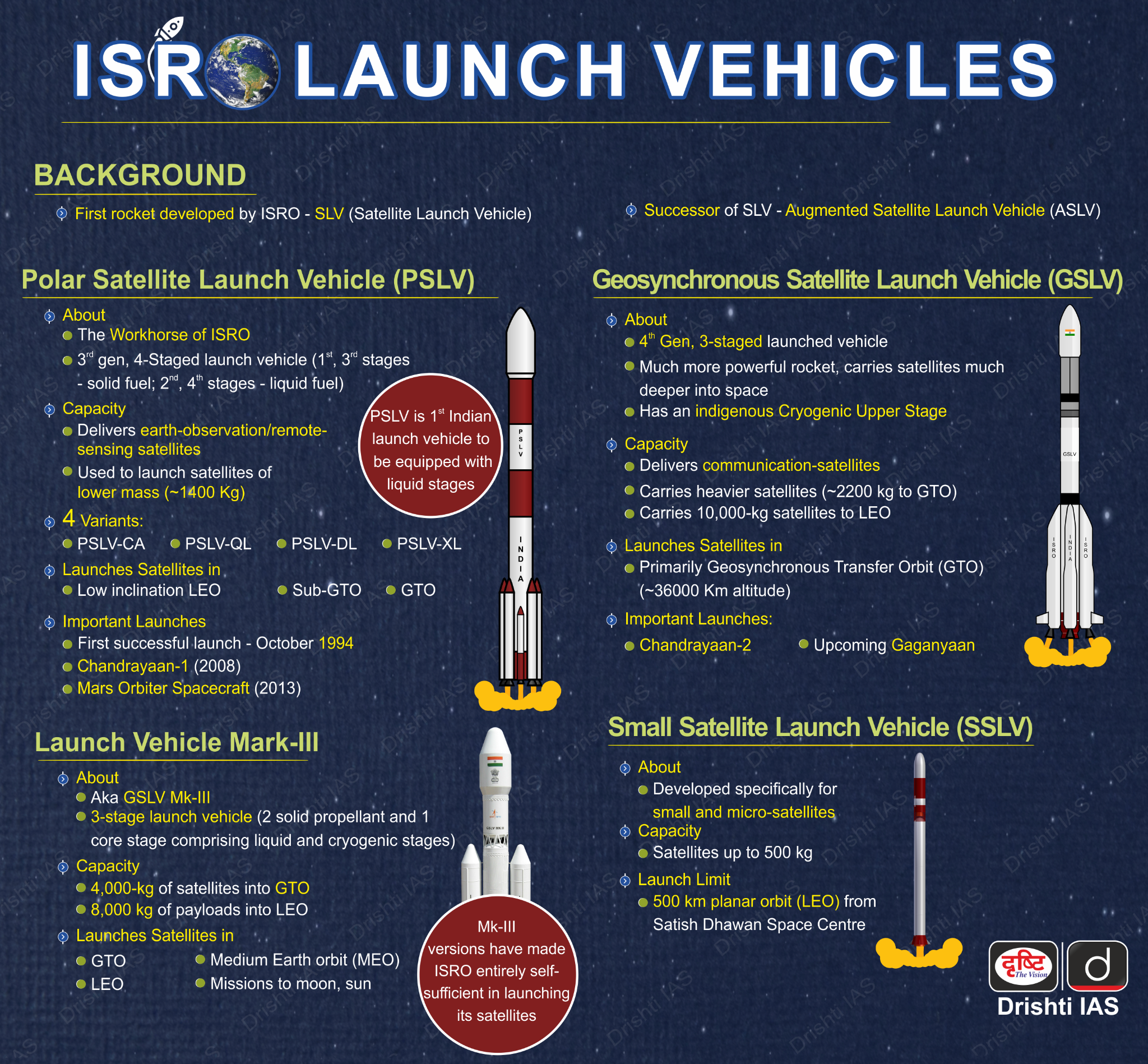Haryana Switch to Hindi
Inter-Basin Indus Water Transfer Plan
Why in News?
India has begun work on a major inter-basin water transfer plan to fully use its share of Indus waters. A feasibility study is underway for a 113-km canal linking the Chenab to the Ravi-Beas-Sutlej system to divert surplus water from Jammu & Kashmir to Punjab, Haryana, and Rajasthan.
Key Points
- Objective of the Project: To optimally use both eastern (Ravi, Beas, Sutlej) and western (Indus, Jhelum, Chenab) rivers, thereby reducing excess water flowing into Pakistan under the Indus Waters Treaty framework.
- Canal Integration Plan: The proposed 113-km canal will link the Chenab with the Ravi-Beas-Sutlej system.
- This canal network will integrate with 13 existing canal systems across Jammu & Kashmir, Punjab, Haryana, and Rajasthan, and will eventually feed into the Indira Gandhi Canal (longest canal in the country), ensuring regional water redistribution.
- This internal reallocation will also enhance India’s water resilience amid growing climate variability and changing rainfall patterns.
- Supporting Infrastructure Developments: Under the Canal Integration Plan Centre is considering doubling the length of the Ranbir canal, and the long-pending Ujh multipurpose project in Kathua district is being revived.
- The second Ravi-Beas link, previously planned to prevent excess Ravi water from flowing into Pakistan, will now become part of the broader canal network. This project involves constructing a barrage and a tunnel to transfer water from the Ujh (a Ravi tributary) to the Beas basin.
- Ongoing Short-Term Measures: India continues to desilt Baglihar and Salal hydroelectric reservoirs on the Chenab to improve water storage and usage.
- India is accelerating work on key hydroelectric projects like Pakal Dul on a tributary Marusadar River (1,000 Megawatts (MW)), Ratle (850 MW), Kiru (624 MW), and Kwar (540 MW) on Chenab river to enhance Indus basin water utilisation.
Indus River
- Source:
- The Indus (In Tibetan called Sengge Chu/‘Lion River’), a major river in South Asia, originates in Tibet near Mansarovar Lake in the Trans-Himalaya.
- The river flows through Tibet, India and Pakistan and about 200 million people live in the area of its drainage basin.
- Course and Major Tributaries:
- It enters India through Ladakh and flows through Jammu and Kashmir before reaching Pakistan's Gilgit-Baltistan region.
- The major left-bank tributaries of the Indus River are the Zaskar, Suru, Soan, Jhelum, Chenab, Ravi, Beas, Satluj, and Panjnad rivers.
- The major right-bank tributaries are Shyok, Gilgit, Hunza, Swat, Kunnar, Kurram, Gomal, and Kabul rivers.
- The Indus River empties into the Arabian Sea near the city of Karachi in southern Pakistan.
- Indus Water Treaty (IWT): The IWT signed in 1960, between India and Pakistan and was brokered by the World Bank.
- The treaty sets out a mechanism for cooperation and information exchange between the two sides on the use of the water of the Indus River and its five tributaries Sutlej, Beas, Ravi, Jhelum, and Chenab.
- India has suspended the IWT until Pakistan ceases its support for cross-border terrorism. It reflects a shift in India’s strategic calculus, using hydrological leverage as a pressure tool.
Chenab River
- Source:
- The river is formed by the confluence of the Chandra and Bhaga rivers at Tandi in the upper Himalayas, located in the Lahaul and Spiti district of Himachal Pradesh.
- The Chandra and the Bhaga originate from the south-west and north-west faces of Barelacha pass respectively in the Himalayan canton of Lahul and Spiti valley in Himachal Pradesh.
- Flows Through: It flows through the Jammu region of Jammu and Kashmir into the plains of Punjab, Pakistan, before flowing into the Indus River.
Madhya Pradesh Switch to Hindi
Cheetahs Spotted Near Pagara Dam
Why in News?
Cheetahs from Kuno National Park appeared near Pagara Dam in Madhya Pradesh’s Morena district, prompting the forest department to urge people to stay alert.
Key Points
- About Kuno National Park: Located in Madhya Pradesh's Sheopur and Morena districts, Kuno National Park was originally declared a wildlife sanctuary in 1981, it gained national park status in 2018 due to its ecological importance.
- The National Park is named after Kuno River, a major tributary of the Chambal river, and it consists mainly of dry deciduous forests. It is situated in the Vindhya mountain range.
- Kuno National Park is the habitat for cheetahs relocated from Namibia and South Africa under Project Cheetah.
- Fauna: Leopard, striped hyena, Indian wolf, blackbuck, sambar deer, gharial (Kuno River).
- Flora: The primary tree species are Kardhaai, Khair and Salai .
- Project Cheetah: Launched in 2022, aimed at reintroducing cheetahs extinct in India since 1952, the project involves translocating cheetahs from South Africa and Namibia to Kuno National Park.
- The project is implemented by the National Tiger Conservation Authority (NTCA) in collaboration with the Madhya Pradesh Forest Department, Wildlife Institute of India (WII) and cheetah experts from Namibia and South Africa.
- Phase-2 of the project plans to source cheetahs from Kenya and introduce them to Kuno and Gandhi Sagar Wildlife Sanctuary.
National Tiger Conservation Authority (NTCA)
- The NTCA is a statutory body constituted under the enabling provisions of the Wildlife (Protection) Act, 1972, as amended in 2006. It functions under the Ministry of Environment, Forests and Climate Change, and NTCA was established in 2005 following the recommendations of the Tiger Task Force.
- The NTCA was created to strengthen tiger conservation in India, exercising powers and performing functions as assigned under the said Act
Wildlife Institute of India
- Established in 1982, it is an autonomous institution under the Ministry of Environment, Forest and Climate Change.
- It is based in Dehradun, Uttarakhand. The Wildlife Institute of India offers training programs, academic courses, and advisory in wildlife research and management.
Chhattisgarh Switch to Hindi
Chhattisgarh Shines at 6th UMAI National Muaythai Championship
Why in News?
Chhattisgarh excelled at the 6th United Muaythai Association India (UMAI) National Muaythai Championship, winning 35 medals.
Key Points
- About Muaythai: It is a traditional Thai (Thailand) combat sport known as the "art of eight limbs" for its use of fists, elbows, knees, and shins. It combines striking and clinching techniques with strong physical and mental discipline.
- Muay Thai has been an integral part of Thai culture and history for centuries, serving as the primary self-defence technique of Thai warriors and soldiers in numerous historical conflicts.
- 6th UMAI National Muaythai Championship: The 6th UMAI National Muaythai Championship took place in Rohtak, Haryana. The Haryana Sports Muaythai Association (HSMA) organised the event under the aegis of the United Muaythai Association India (UMAI).
- The United Muaythai Association India (UMAI), headquartered in Jaipur, Rajasthan serves as the official governing body for both professional and amateur Muaythai in India and internationally.
Uttar Pradesh Switch to Hindi
ISRO Tests Model Rocket in UP
Why in News?
The Astronautical Society of India (ASI), in collaboration with InSPACe (Indian National Space Promotion and Authorisation Centre) and Indian Space Research Organisation (ISRO), successfully conducted rocket launch trials in preparation for a student model rocketry competition set for October 2025.
Key Points
- Astronautical Society of India (ASI): The ASI was established in 1990 to promote the growth and development of astronautics in India.
- It actively supports the interests of developing countries in astronautics through its role in the International Astronautical Federation (IAF), Paris, where it serves as a voting member.
- Student Model Rocketry Competition: The upcoming IN-SPACe CANSAT and Model Rocketry India Student Competition 2024–25 in Kushinagar offers undergraduates hands-on experience in designing, building, and launching CANSATs and model rockets to explore space technology.
- CANSATs are miniature satellites that fit inside a soft drink can. These payloads are launched to a few hundred meters using sounding rockets and descend with parachutes.
Indian National Space Promotion and Authorisation Centre (IN-SPACe)
- About: IN-SPACe is a single-window, independent, nodal agency that functions as an autonomous agency in the Department of Space (DOS).
- It was formed following the space sector reforms in 2020 to enable and facilitate the participation of private players.
- Key Functions: IN-SPACe promotes, authorizes, and supervises space activities of non-governmental entities, including building launch vehicles, providing space services, sharing ISRO’s infrastructure, and establishing new space facilities.
- IN-SPACe serves as the interface between ISRO and NGEs, helping streamline private sector engagement in space missions.
Indian Space Research Organisation (ISRO)
- About: ISRO, headquartered in Bengaluru, Karnataka, operates under the Department of Space, is India’s national space agency focused on advancing space science and technology for national and global benefit.
- Historical Background: ISRO evolved from the Indian National Committee for Space Research (INCOSPAR), established in 1962 under the vision of Dr. Vikram Sarabhai.
- In 1969, ISRO was formally created, replacing INCOSPAR and expanding its role in space technology. In 1972, the Department of Space was set up, and ISRO was brought under its administrative control.
- Core Objectives: ISRO/DoS aims to develop and apply space technology to meet various national needs, including:
- Communication and broadcasting
- Meteorological services
- Resource monitoring and management
- Navigation and positioning systems
- Major Achievements: ISRO has built key space systems in India for television, weather forecasting, and satellite-based resource mapping.
- It has developed indigenous launch vehicles like the Polar Satellite Launch Vehicle (PSLV) and Geosynchronous Satellite Launch Vehicle (GSLV) to place satellites into desired orbits.
Chhattisgarh Switch to Hindi
PEKB Becomes First Solar-Powered Coal Mine in Chhattisgarh
Why in News?
Parsa East and Kanta Basan (PEKB) has become Chhattisgarh’s first coal mine to run entirely on solar power, achieving full energy self-reliance.
Key Points
- About PEKB Mine: The Parsa East and Kanta Basan (PEKB) coal mine plays a vital role in supplying coal for electricity generation to nearly 80 million consumers.
- The solar plant in PEKB is expected to reduce nearly 400,000 tonnes of carbon emissions over 25 years—equivalent to planting 2.5 million trees.
- Environmentalists see this initiative as a major step toward energy security and environmental protection, combining coal mining with clean energy solutions.
- Coal Reserves in Chhattisgarh: The state holds 16% of India’s total coal reserves, making it one of the richest in coal resources.
- The state ranks second in the country in coal production, contributing over 18% of India’s total output. The majority of these reserves consist of power-grade coal, suitable for electricity generation.
- An estimated 44,483 million tonnes of coal have been identified across 12 coalfields, mainly located in the districts of Raigarh, Surguja, Koriya, and Korba.
- Chhattisgarh-based Coal India subsidiary South Eastern Coalfields Limited’s (SECL) Gevra and Kusmunda coal mines ranked 2nd and 4th globally among the largest coal mines.
- Located in Korba district, they jointly produce over 100 million tons annually, about 10% of India's coal output.
- Both mines use advanced, eco-friendly technologies like surface miners for blast-free operations.


.png)




.jpg)























.png)


.jpg)

 PCS Parikshan
PCS Parikshan





